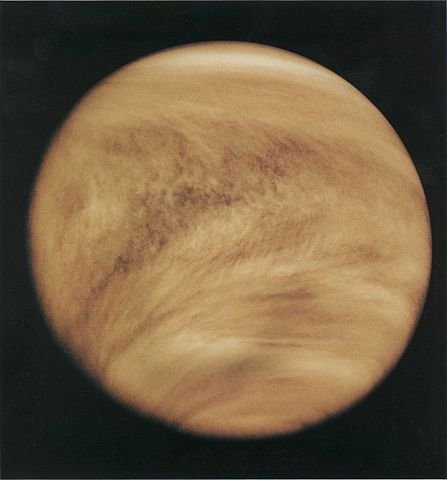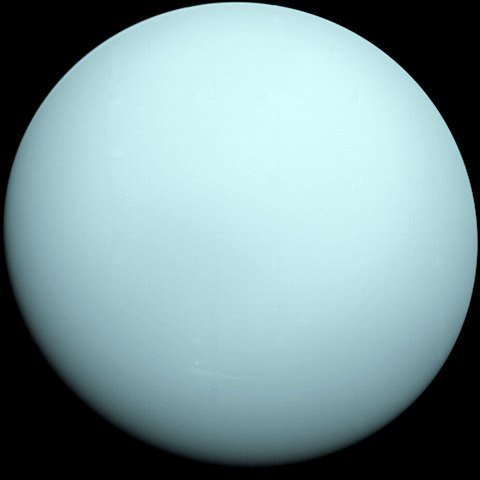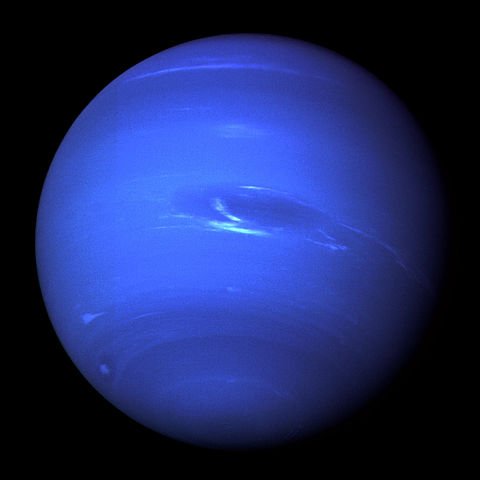Observations of the planets
Planets are the brightest objects of the night sky after the Moon. Amateur astronomer can see even in a small telescope a lot of details of these objects. Of course, they won't be as good as NASA photos below, but we will see real colors of the planets, differences in their size and the most important surface details. In the range of amateur equipment there are also brighter moons of some planets of our solar system.
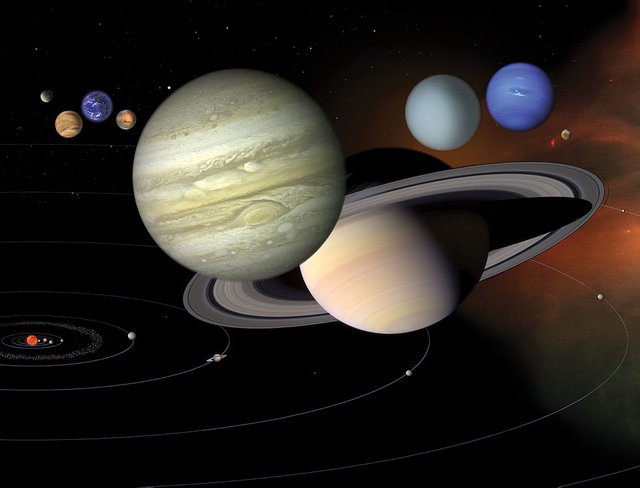
By NASA link [Public domain]
Mercury
The first planet in our Solar System isn't an easy target for observers. Mercury is quite difficult to see because its orbit runs very close to the Sun. This makes the planet visible only shortly before or after sunset. In the northern hemisphere, it is best to look for Mercury in the autumn just before sunrise or spring after sunset. The Stellarium program will help you choose the best search period when the planet is as high as possible above the horizon. With the naked eye, we see a faint star of white color. The 7 X 50 binoculars will definitely help in the search, because the sky low on the horizon is often polluted and the naked eye may miss Mercury. Unfortunately, we won't see the planet's shield in the binoculars. We need a telescope with a diameter of at least 4 inches (100 mm). When we can track Mercury with a telescope, it's possible that we will see his small orange shield, reminiscent of the phase of our moon. We won't see much surface detail on Mercury.
Venus
The other planet is a much better observation target. It is the third after the Sun and the Moon, the brightest object of the Earth's sky. It is located further from the Sun than Mercury, so by observing Venus from the surface of the Earth, we see it much higher above the horizon. For 8 years Venus has 5 stages of visibility. Good observation conditions begin just before the greatest angular distance of Venus from the Sun in the evening sky and end before the lower conjunction, when Venus is closest to Earth and becomes an invisible night in our sky. Then they come back and last until the maximum morning distance from the Sun and some time after it. Together, this is around 6 months of good conditions. When Venus is farthest from the Sun in the sky, its shield is half-illuminated and of medium size. When the planet approaches the Earth, a thin crescent of its shield is visible, which due to the large size of the angle is then visible even through binoculars. In the telescope, the glow of Venus requires the use of filters that reduce the brightness. In practically every phase, it is a planet with a clearly visible shield, and sometimes even details of the clouds of its atmosphere.
Mars
The best visibility of this small planet is 6 weeks before and after the opposition that is the closest approach of Mars to the Earth. Due to the small size and large differences in the distance from the Earth, Mars can be practically not visible, and during the opposition, it shines brightly like Jupiter. The opposition is repeated every 780 days, or 2 years and 7 weeks. During these close-ups, Mars's distance from Earth varies from 56 to 101 million kilometers. That is why there are great oppositions of Mars as this year and smaller, when the planet is much further away. Mars, unfortunately, doesn't impress with its size during the observation. We only see a red-orange star in binoculars. The best views of Mars in amateur telescopes resemble looking at our full moon with the naked eye. You can see white polar ice caps on Martian poles, or areas with a clearly darker than red color. Mars is already a planet farther away than Earth, which is why it can be seen all night long. For satisfactory observations, you need a telescope with a diameter of 6 inches (150 mm).
Jupiter
Here is the king of planets. Visible well practically throughout the year. The binoculars are already showing us a bright shield with the four moons of Jupiter and confirms our belief that we are dealing with the planet. In smaller telescopes from just 4 inches (100 mm) in diameter, we are able to see the main belts crossing the shield of this gas giant. The use of instruments with a diameter of 8 inches (200 mm) will allow us to enjoy the image resembling Jupiter's pictures. The Great Red Spot is visible, many stripes and details invisible in smaller telescopes. It happens to see the black shadow of one of Jupiter's satellites falling on his shield. The rotation time of this planet around its own axis is less than 10 hours, so when observing at intervals of about 15 minutes, you can see changes in the view of the atmosphere of the planet. Jupiter is undoubtedly the easiest planet to be found in the sky. I recommend to every beginner observer the science of observing planets on Jupiter. The use of colorful planetary filters will reveal the amazing structures of different parts of the atmosphere of this giant.
Saturn
This unique planet is definitely different from all. The Saturn ring system is really impressive. This planet is two times farther away than Jupiter, so its size in the telescopes is somewhat disappointing. With the naked eye, Saturn is the medium brightness star of the yellow color. The binoculars show us that this star isn't an ideal point, but rather a bit elongated. Already a small telescope with a diameter of 4 inches (100 mm) with a magnification of 100 X allows you to enjoy the eye of Saturn as with photographs. The Cassini Division, the largest black circle on the rings, is visible in instruments with diameters from 8 inches (200 mm) upwards. Through almost every telescope you can see Titan the largest moon of Saturn. Larger instruments allow you to see three more satellites of this planet. Saturn after Jupiter is the second most attractive planet for observers. Unfortunately, due to the large distance, despite having huge rings, Saturn in the telescope is slightly smaller than Jupiter, which is closer to us.
Uranus
Uranus is located nearly twice as far away as Saturn, which makes it a challenge for the observer. Unfortunately, it is already a planet unattainable for smaller telescopes, in which, like in binoculars, it looks like a faint blue-green star. With the naked eye, looking for Uranus on the edge of the human eye's capabilities is very difficult. I recommend using binoculars for this purpose and a map with the current location that will help us. In telescopes over 8 inches (200 mm) in diameter, you can see a small Uranus globe in blue and green. When we use a large instrument over 12 inches (300 mm) in diameter, we are able to see several of its moons. Unfortunately, although Uranus is a large gas giant, the surface of the planet won't show us the smallest detail. This mysterious world is simply too far away for amateurs to get a better look at. I am looking for Uranus for more experienced, who have already mastered the observations of other planets.
Neptune
It is already a planet completely invisible to the naked eye, to find it the need for a current map of the sky, binoculars and a lot of experience. With binoculars, he is only a weak blue star and to see if we're looking for a good one, only a large telescope can confirm our assumptions. In a telescope with a diameter of 12 inches (300 mm) one can see a tiny blue globe that confirms that it is the planet Neptune. The huge distance makes this gas giant a small point even in a telescope. Pluto, or dwarf planet that is further away than Neptune, requires 12 inches (300 mm) of telescope diameter to find it. Seeing the tiny Pluto shield at the end of the Solar System is a challenge even for real astronomical observatories. In summary, the most visible planets are Venus, Mars, Jupiter and Saturn. Astronomy amateurs focus on these four planets. Maybe some of you will want to hunt your first planet. In case you had any questions, I'll be glad to help. The sky of every cloudless night opens window to the surrounding universe. Let's break away from earthly matters and see how our planet is a small point in the entire cosmos.
Greetings to lovers of Astronomy!
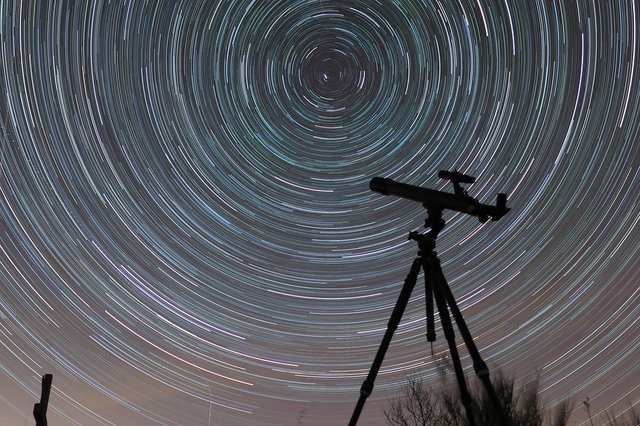
Source: Pixabay link [CC0 licence]
References:


